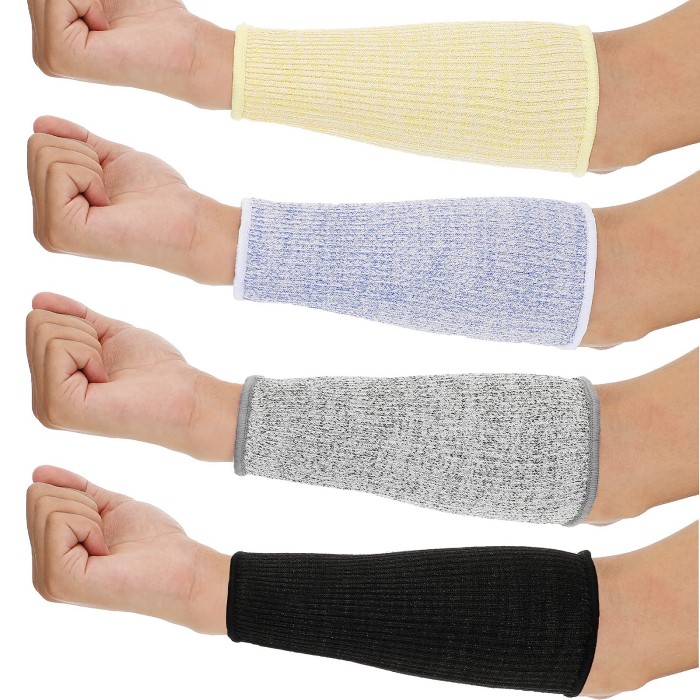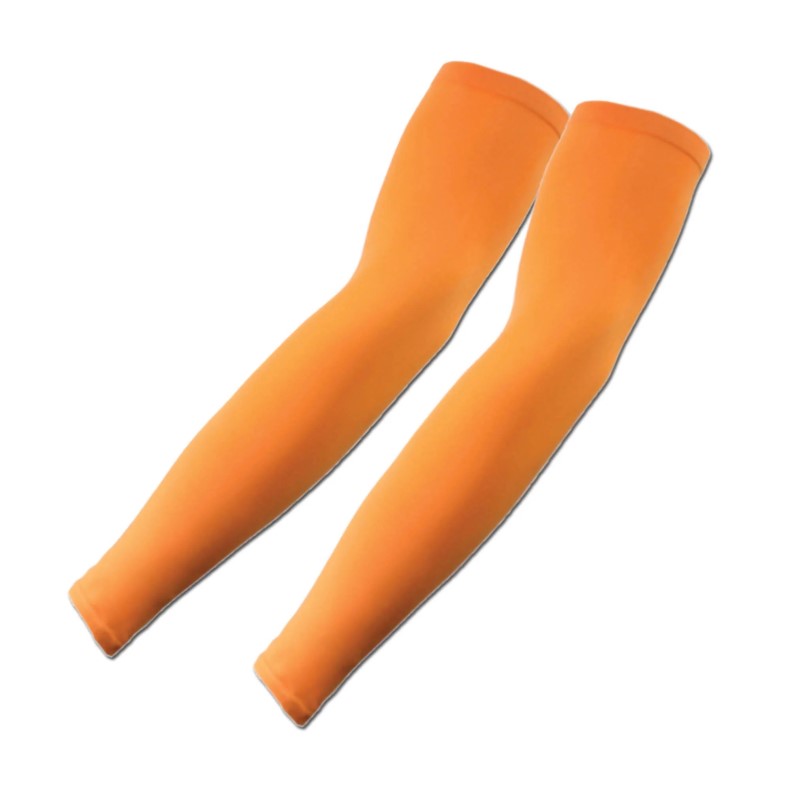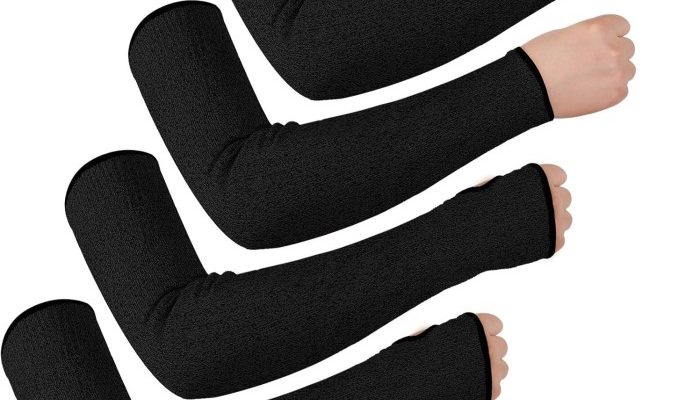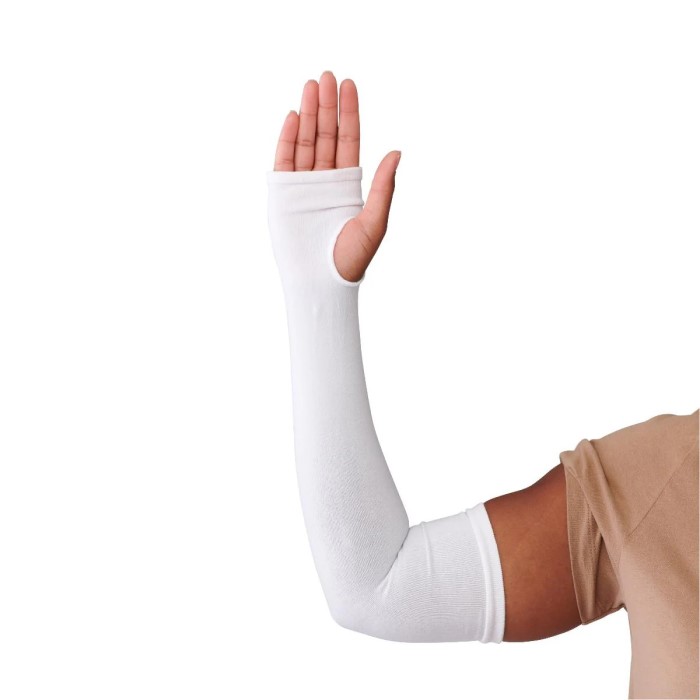Introduction
Protecting your skin while enjoying outdoor activities is essential in today’s fast-paced world. Wearing protective arm sleeves has emerged as a practical solution for individuals seeking comfort, protection, and performance enhancement. Whether you are an athlete, outdoor enthusiast, or someone who spends extended periods in the sun, these versatile garments can make a significant difference in your overall well-being. This article will delve into the various benefits of wearing protective arm sleeves, covering their protective qualities, health advantages, and their role in performance during sports and daily activities.

Importance of Arm Protection
Protecting your arms is vital in workplaces with physical hazards. Injuries can lead to lost productivity and costly medical bills. Protective arm sleeves offer a simple way to shield against workplace dangers. Understanding their importance can help ensure safety and efficiency.
Common Workplace Hazards that Require Protection
Many jobs expose workers to risks that endanger their arms. Common hazards include cuts from sharp tools, burns from hot surfaces, and splashes of harmful chemicals. For example, industries like construction and manufacturing often use sharp blades and heavy machinery. These tools can cause severe injuries if workers lack proper protection.
Chemical spills are another significant risk. Workers handling hazardous substances need protection against burns or skin irritation. Extreme temperatures in environments such as welding or food processing can also result in burns or frostbite. Each of these hazards calls for appropriate arm protection to minimize risk.
Role of Protective Sleeves in Injury Prevention
Protective arm sleeves create a barrier between the skin and workplace threats. They are designed with materials that withstand cuts, heat, or chemicals. By wearing these sleeves, workers reduce the chance of encountering accidents. For instance, cut-resistant sleeves protect against blade slices during precision tasks.
Additionally, heat-resistant sleeves safeguard workers in high-temperature environments. They prevent burns caused by hot equipment or accidental contact. Workers handling chemicals benefit from liquid-resistant sleeves. These sleeves prevent harmful substances from damaging the skin. Using protective arm sleeves is a proactive approach to ensuring safety.

Types of Protective Arm Sleeves
Workplaces face various risks, so protective arm sleeves come in different types. Each type is tailored to protect against specific hazards, ensuring maximum safety and flexibility.
Cut-Resistant Sleeves for Sharp Object Safety
Cut-resistant sleeves are essential in environments with sharp tools or machinery. These sleeves use materials like Kevlar or Dyneema, which resist cuts and abrasions. Workers in construction, manufacturing, and glass handling benefit greatly from these sleeves. They shield the arms during tasks involving knives, saws, or sharp edges. This type reduces injuries and allows workers to focus on precision tasks without fear.
Heat-Resistant Sleeves for Extreme Temperatures
Heat-resistant sleeves protect workers from burns in high-temperature environments. They often contain materials like aramid fiber or leather, which withstand extreme heat. Industries such as welding, glassblowing, and metalwork rely on these sleeves for arm safety. Workers can handle hot surfaces or work near flames without risking burns. These sleeves are indispensable in roles where extreme heat is a daily occurrence.
Chemical-Resistant Sleeves for Hazardous Substances
Chemical-resistant sleeves are vital for jobs involving harmful substances. They are made from materials like neoprene or PVC, which prevent chemical penetration. Industries such as manufacturing, cleaning, and laboratory work often demand this protection. These sleeves shield against splashes, spills, and prolonged exposure to harmful chemicals. Workers can perform tasks confidently, knowing their skin is safeguarded from irritation or damage.
Materials Used
Protective arm sleeves are made with materials designed to tackle specific hazards. Their construction ensures safety, flexibility, and durability. Below are the most common materials used and their key benefits.
Kevlar: Superior Strength and Durability
Kevlar is a highly durable synthetic fiber known for its exceptional strength. It offers superior cut resistance, making it ideal for environments involving sharp tools or machinery. It is lightweight, ensuring wearer comfort. Workers in industries like construction and glass handling benefit from Kevlar sleeves. They protect against cuts and abrasions while allowing free movement.
Neoprene: Flexible and Chemical-Resistant
Neoprene offers excellent chemical resistance and flexibility. It is often used in jobs dealing with hazardous liquids or chemicals. This material shields arms from harmful splashes and spills, preventing burns or irritation. Neoprene sleeves are also water-resistant, ensuring durability in wet conditions. Industries like manufacturing, cleaning, and laboratory work rely on this material for added safety.
Leather: Traditional Heat Protection
Trusted Material for Heat Resistance
- Historical Use: Leather has been used for centuries as a dependable material for protective gear. Its properties have made it a go-to choice across various industries that require heat resistance.
- Versatile Applications: Different sectors, such as manufacturing, construction, and fabrication, often rely on leather for heat protection due to its effectiveness and reliability.
Resistance to Extreme Temperatures
- High Heat Tolerance: Leather can withstand high temperatures without degrading or losing its shape. This characteristic makes it particularly suitable for high-intensity tasks like welding, where workers are exposed to extreme heat.
- Protection Against Flames: In addition to heat, leather serves as an effective barrier against flames. It helps to shield skin from potential burns caused by sparks or accidental contact with hot surfaces.
Benefits of Leather Sleeves
- Burn Prevention: Leather sleeves are designed to prevent burns from hot machinery or open flames, significantly enhancing the safety of workers in high-temperature environments.
- Robust Design: The thickness of leather provides a sturdy layer of protection. This thickness, combined with its natural durability, ensures that leather sleeves can withstand wear and tear over time.
Comfort and Flexibility
- Flexible Fit: Despite its thickness, leather is surprisingly flexible. This allows for a range of movement, enabling workers to perform tasks without feeling restricted.
- Comfortable Wear: Leather sleeves mold to the wearer’s body over time, providing a comfortable fit that enhances overall usability during long work hours.
5. Value in High-Temperature Industries
- Proven Efficacy: Workers in high-temperature industries place great value in leather for its tested performance. The material’s ability to offer reliable protection has been established through years of usage in various professions.
- Long-lasting Durability: Leather’s durability means it can withstand harsh conditions without significant deterioration. As a result, it remains a popular choice for safety gear, as it provides both short-term and long-term protection.
Additional Protective Features
- Resistance to Other Hazards: Besides heat, leather also provides some level of resistance against cuts and punctures, making it a multifaceted material for protective clothing.
- Ease of Maintenance: Leather gear is relatively easy to maintain and can often be cleaned and treated to prolong its lifespan, enhancing its value in the workplace.
Industries That Require Protective Arm Sleeves
Protective arm sleeves are crucial in industries with high risks to worker safety. Different workplaces expose employees to unique hazards requiring specific sleeve types. Below are key industries where protective arm sleeves are indispensable.
Manufacturing and Industrial Work
Manufacturing involves operating machinery, handling sharp tools, and exposure to hazardous substances. Protective arm sleeves minimize injuries from cuts, abrasions, and chemical splashes. Workers in assembly lines or factories benefit from cut-resistant and chemical-resistant sleeves. These sleeves allow them to focus on precision tasks without fear of harm.
Construction and Heavy Duty Jobs
Construction workers face risks like sharp tools, heavy machinery, and rough materials. Protective sleeves guard against cuts, abrasions, and punctures on site. Tasks like cutting, welding, and drilling often require cut-resistant and heat-resistant sleeves. These sleeves provide durable protection, ensuring safety in challenging environments.
Food Processing and Agricultural Work
In food processing, workers handle sharp equipment and face risks from extreme cold or heat. Protective arm sleeves prevent cuts and burns, improving workplace safety. Agricultural workers encounter risks from thorny plants and harmful chemicals, using chemical-resistant and cut-resistant sleeves. These sleeves make tasks safer and more efficient in demanding roles.
Benefits of Using
Protective arm sleeves provide a range of benefits that make workplaces safer and more efficient. Their diverse applications help employees perform confidently while minimizing accidents and long-term health issues.
Enhanced Safety and Reduced Risk of Injuries
One of the key advantages of wearing protective arm sleeves is enhanced safety. These sleeves act as a strong barrier, protecting against cuts, burns, and chemical spills. For example, cut-resistant sleeves prevent blade-induced injuries in construction and manufacturing. Heat-resistant sleeves protect against burns in welding or metalwork environments. Chemical-resistant sleeves shield workers from harmful splashes, preventing skin irritation or injuries. By reducing these risks, protective sleeves help create a safer workplace for everyone.
Improved Comfort and Productivity
High-quality protective arm sleeves are designed with both safety and comfort in mind. They are made from materials like Kevlar, neoprene, or leather, ensuring flexibility and a lightweight feel. Comfortable sleeves reduce irritation and fatigue, allowing workers to focus on their tasks. Workers can perform their duties without the need to stop frequently due to discomfort or injuries. This improved focus translates to greater productivity across industries like construction, manufacturing, and food processing.
Long-Term Cost Savings Through Prevention
Investing in protective arm sleeves also leads to significant cost savings. Workplace injuries can result in expensive medical bills and lost productivity. Protective sleeves reduce the likelihood of accidents, minimizing these expenses. Durable materials like Kevlar and leather ensure sleeves last longer, cutting replacement costs. By preventing injuries and reducing downtime, businesses also save on insurance and compensation claims. Overall, these sleeves are a cost-effective solution for ensuring worker safety and occupational efficiency.
How to Choose the Right Arm Sleeves
Selecting the right protective arm sleeves ensures worker safety in challenging environments. Proper evaluation helps address specific risks effectively. Below are essential steps for choosing suitable sleeves.
Assessing Workplace Risks
Start by identifying hazards in your workplace. Look for risks like cuts, burns, or chemical exposure. Different tasks demand specific types of arm protection. For example, sharp tools require cut-resistant sleeves, while chemicals demand chemical-resistant ones. Evaluate the severity and frequency of these risks. Understanding workplace dangers helps you choose sleeves tailored to safety needs.
Evaluating Material and Design Features
Consider the materials used in protective sleeves. Kevlar provides excellent cut resistance. Neoprene is ideal for chemical protection. Leather withstands high heat comfortably. Look for durability and flexibility in the material. Check design features like seams, length, and closures. Sleeves should cover exposed areas fully to prevent injuries. Choose those with breathable and lightweight designs for enhanced comfort.
Selecting the Proper Fit for Maximum Efficiency
Choose sleeves that fit snugly without being restrictive. A good fit prevents sliding or discomfort in active work. Measure arm length and circumference for accurate sizing. Adjustable closures ensure a secure hold during demanding tasks. Properly fitting sleeves improve safety and efficiency at work. Workers can focus on tasks without worrying about loose or tight sleeves.
By assessing risks, evaluating materials, and selecting the correct fit, you can ensure maximum arm protection. Picking the right protective arm sleeves guarantees safety and productivity in your workplace.
Maintenance and Care
Proper maintenance ensures the longevity and effectiveness of protective arm sleeves. Caring for them correctly reduces costs and improves workplace safety. Below are essential steps to keep your sleeves in optimal condition.
Best Practices for Cleaning
Clean protective arm sleeves regularly to remove dirt, chemicals, and debris. Use mild detergent and warm water for most materials like Kevlar and neoprene. For leather sleeves, use a leather-specific cleaner to avoid damage. Check the manufacturer’s guidelines for washing instructions. Avoid using harsh chemicals as they can weaken the material. Dry sleeves fully before the next use to prevent mold or bacteria growth.
Guidelines for Proper Storage
Store protective arm sleeves in a clean, dry area away from direct sunlight. Exposure to sunlight can weaken certain materials like neoprene. Use hooks or drawers to avoid crushing or folding the sleeves. Keep sleeves separate from sharp objects to prevent tears or damage. A well-organized storage system ensures easy access and prolonged material durability.
When to Replace Worn-Out Sleeves
Inspect protective arm sleeves daily for signs of wear and tear. Replace sleeves with holes, frayed edges, or reduced strength. Stretch or weakened fabric can compromise protection and safety. Pay special attention to sleeves used in chemical environments as they degrade faster. Follow manufacturer recommendations for replacement cycles. Timely replacement ensures consistent arm protection and reduces workplace accidents.
Conclusion
In conclusion, wearing protective arm sleeves offers numerous benefits that enhance comfort, safety, and overall well-being. From providing UV protection and reducing the risk of injuries to adding style to your outfits, these sleeves are versatile accessories that cater to various needs. By understanding their advantages, choosing the right product, and properly caring for them, individuals can enjoy the full range of benefits that protective arm sleeves have to offer. Whether you are an athlete, a weekend warrior, or someone looking to protect your skin, investing in quality arm sleeves is a wise choice for a healthier lifestyle. Embrace the advantages of protective arm sleeves today, and enjoy their remarkable benefits in your daily activities!



